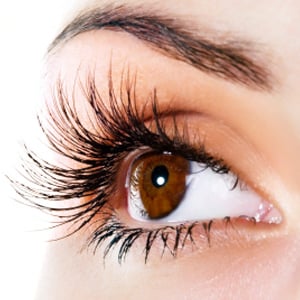
A complementary therapy technique, called iridology, is based on the belief that patterns, colours and other characteristics of the iris (the circle around the pupil that gives the eye its distinctive colour) contain information about a person’s state of health.
What is iridology?
Iridology is “the study of the iris, particularly of its colour, markings, changes, etc., as associated with disease”, according to the Dorland’s Illustrated Medical Dictionary.
It is not a treatment, but a diagnostic tool, used to identify problem areas in the body, whether it be an organ, the skeleton or the blood. “It is a tool that can point out ailments before a person even starts showing symptoms,” says iridologist Jacques Ras from the Healing Hands International Massage Academy.
How does it work?
A practitioner will examine the patient’s eyes, either by inspecting them with a regular magnifying glass and light, or more advanced methods, such as state-of-the-art digital photography of the iris. The colour, markings or flecks in the iris area are noted, and then compared to an iridology chart, which relates various spots on the eye to about 50 parts of the body. For instance, the innermost circle in both eyes is said to reflect the health of the stomach.
Where does it come from?
According to Ras, iridological practices have been around for centuries, but it was a Hungarian doctor, Ignatz von Peczely, who in 1837 was the first to practise formal “eye diagnosis”. Following close behind Von Peczely, a Swedish pastor, Nils Liljequist constructed what would develop into an elementary iris chart in 1864.
Iridology became better known during the 1950s when an American chiropractor, Bernard Jensen started teaching and writing extensively on the subject.
Because it makes use of established and time-honoured principles, it’s considered to be a science, according to the book "Understanding Iridology" by Dr Bernard Jensen and Dr Donald V Bodeen.
What are its uses?
- It can detect health problems in the body, even before symptoms occur.
- Information from the irises can be obtained quickly, painlessly and inexpensively.
- It is non-invasive. In other words, the technique does not involve penetration of the skin by needles or knives – depending on the technique used by the iridologist, the worst that might happen is an invasion of your personal space, when the practitioner leans closer to gaze into your baby blues.
- It is inexpensive compared to the medical alternative – blood tests, X-rays, etc.
The critics
Iridology is not without its critics. According to a terribly one-sided report by Dr Stephen Barrett, a number of iridologists have undergone tests to examine the credibility of this practice and failed miserably. He also highlights the incidence of misdiagnosis which caused patients considerable emotional distress – but honestly, how often doesn’t that happen even in the medical world?
The verdict
The proof, as they say, is in the pudding. So the team at Shades of Healing, a centre for complementary therapies in Cape Town, agreed to examine my irises. Ras scrutinised my eyes with his magnifying glass, scribbled a bit on his chart, looked some more, and frowned. This continued for about 10 minutes, and then the results...
I was a little surprised when some of his diagnoses were spot on, for instance irregular blood sugar levels, night blindness, and some pent-up frustration I’m carrying around.
Then there were some other ailments I really couldn’t relate to – like a low appetite (I wish!), or a stressed-out liver. However, Ras explains that “iridology can pick up illnesses even before any symptoms appear. So the organ might be experiencing stress, but the body hasn’t started showing any symptoms.”
But does it work? And my honest answer is: I’m not sure. I’m still sceptical about any practice that has not undergone extensive scientific testing. But just because it hasn’t been scientifically proven, doesn’t mean it doesn’t work.
* Important notice: Iridology should not be used as a substitute for conventional treatment.
Sources:
Understanding iridology – Dr Bernard Jensen & Dr Donald V Bodeen (Health Harmony, 1988)
Eye spy by Desté Pratley, Odyssey Magazine – April/May 2007
www.wikipedia.com
Iridology is nonsense by Dr Stephen Barrett, http://www.quackwatch.org/index.html




 Publications
Publications
 Partners
Partners









